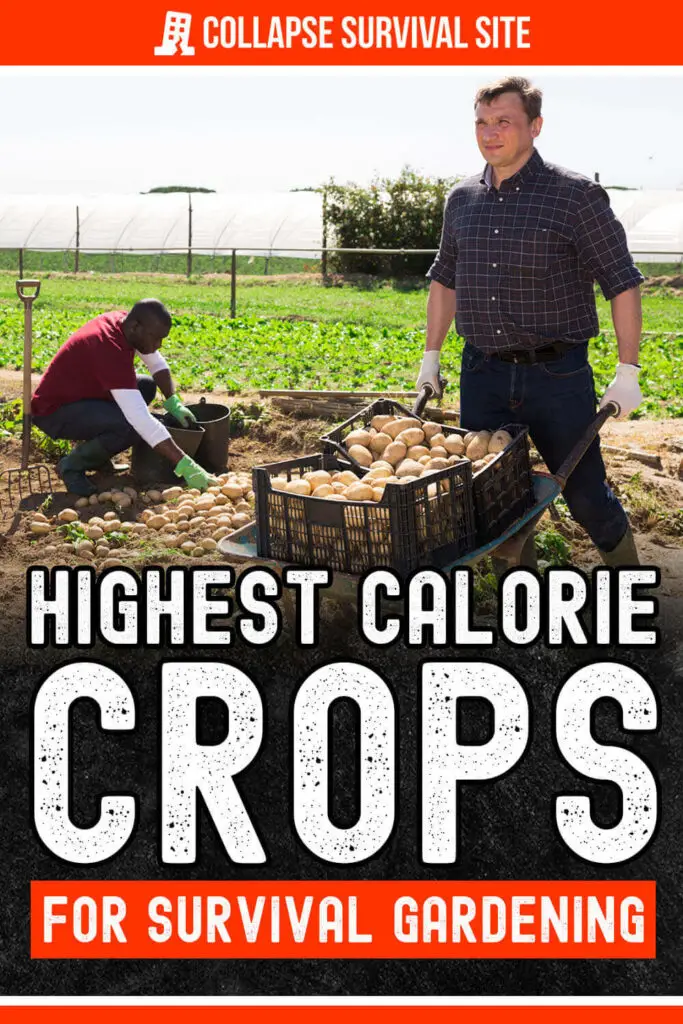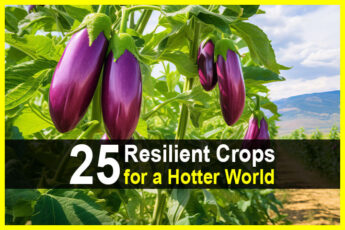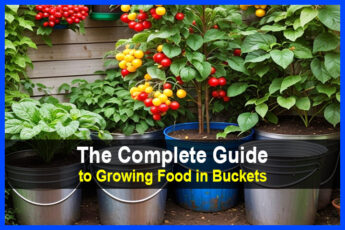Estimated reading time: 14 minutes
Growing up, my family had a vegetable garden every year. We didn’t grow one because we had to but because we enjoyed the work and the availability of fresh produce at our fingertips. These days it seems almost trendy to say you grow your own food but the time to have a food garden out of necessity certainly seems to be on the horizon.
Food prices keep increasing, shortages have become normal, and changing weather patterns all affect what types of foods are available to us. The system on which we rely for our food is really an experiment. When you take into account the whole of human existence this system hasn’t been around for all that long so it’s no wonder it has problems.
Whether that system just keeps getting worse, it collapses, or SHTF happens, the answer is that we need to get back to our roots and grow our own food. In the case of SHTF, you are going to want the most calorie-dense vegetables and fruits you can grow and you are going to want to grow them as quickly as you can.
Want to save this post for later? Click Here to Pin It On Pinterest!
High-Calorie Vegetables For Survival
The vegetables below are listed in no particular order.
Amaranth

Amaranth is a group of plants used for their leaves and grains. On average they provide roughly 250 calories per cup when cooked.. After planting, amaranth can be ready for harvest within about three months. Amaranth likes sunny conditions and temperatures around 70 degrees Fahrenheit.
Soybeans
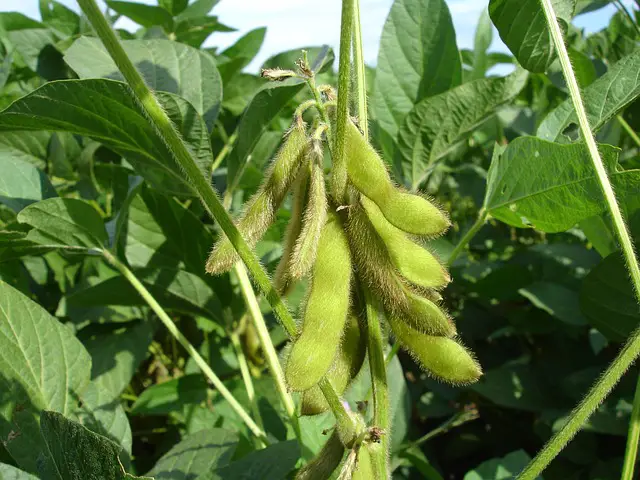
Soybeans are native to the region of East Asia and while they have many different uses, one of the most common uses for them is in making soy milk and tofu. Soybeans provide around 297 calories per cup and can require about 20 weeks of growing before the plant is mature. Soybeans like sunlight, soil that drains well, and temperatures around 80 degrees Fahrenheit.
Pinto Beans
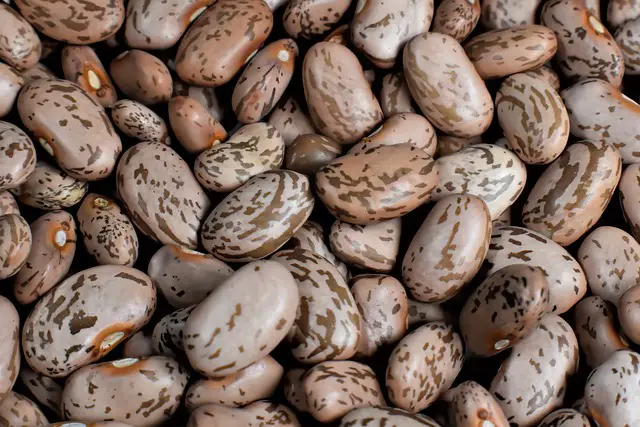
Pinto beans are a popular legume in the southern United States and northern Mexico. One cup of pinto beans can provide around 245 calories. When planting, be sure to pick a spot that receives full sunlight all day long. Depending on the variety, it can take up to 100 days before you can harvest.
Lima Beans
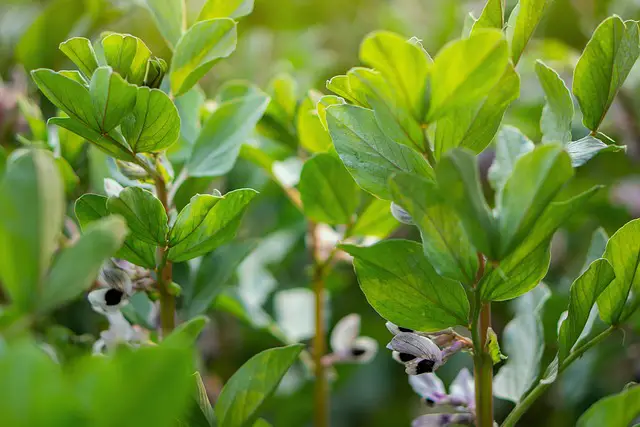
Lima beans also referred to as butter beans due to their creamy taste and texture, can provide around 209 calories per cup. When growing, choose a location that is warm, not hot, and where it will receive at least a few inches of water per month. These beans should be ready for harvest 60-70 days after planting.
Jerusalem artichokes
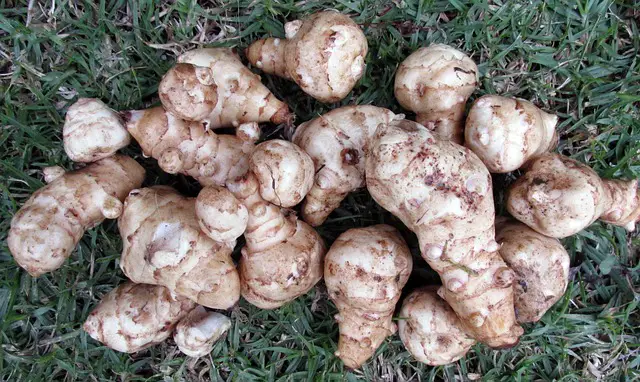
Jerusalem artichokes are also referred to as wild sunflower, Sunroot, or earth apple and it is a native plant of central North America. In one cup you can expect to get a little over 110 calories from this versatile tuber. This plant is relatively easy to grow, likes slightly cooler temperatures, and is ready for harvest in about 20 weeks.
Peanuts

Interestingly, peanuts are considered a grain legume and an oil crop because of the high levels of peanut oil they contain. A handful of peanuts will also give you a boost of energy because one cup of peanuts contains around 830 calories and you can expect one plant to produce up to 50 nuts.
When planting, choose a hot location that receives plenty of rainfall, and has loose soil. You can expect to harvest between 120-160 days.
Quinoa
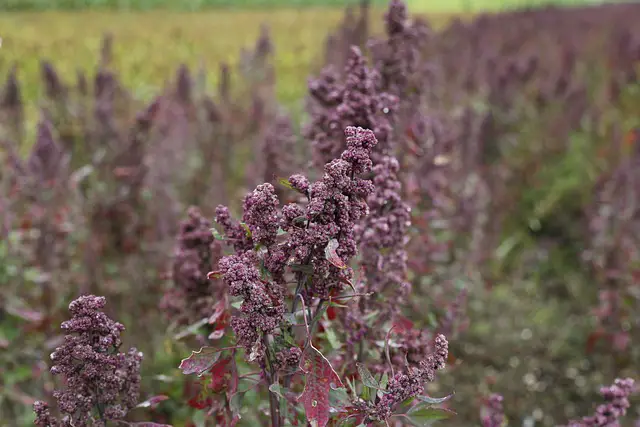
Quinoa is a part of the amaranth family and its seeds have higher nutritional values than other grains, including protein, fiber, B vitamins, and other minerals. One cup of quinoa will also provide you with about 222 calories. When planting, choose a location that is warm with sandy soil that drains well and you can expect to harvest the seeds in 90-120 days.
Winter Squash
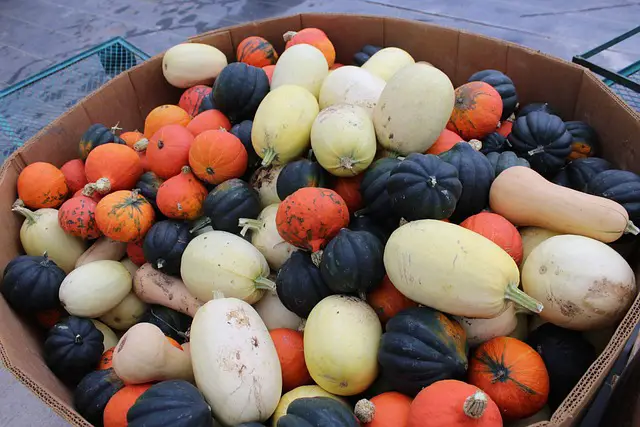
Squashes can be eaten raw but most people find them to be tastier when they are baked or roasted. The average squash will provide around 40-80 calories per cup and some varieties include butternut squash, carnival squash, banana squash, pumpkin, buttercup squash, and acorn squash.
Squash thrives in soil that drains well and when it receives 8 hours of sunlight a day Depending on the variety, you can expect to harvest squash between 80-100 days after planting.
Potato
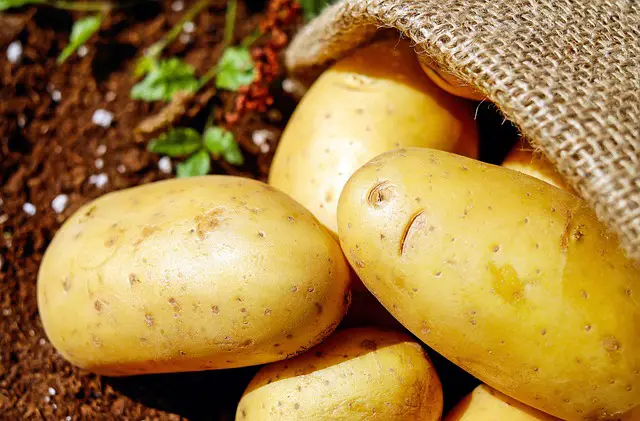
Potatoes making it on the list is probably no surprise since they have been considered a starvation food throughout history and if they are good enough for Mark Watney in the movie The Martian, they should be good enough for you.
At 110 calories per 5.3 ounces (.66 cups) the average potato is going to provide you with around 160 calories. Potatoes like at least 6 hours of daylight and slightly acidic fertile soil. Soil should be loose to allow the tubers to properly grow. Each potato plant can produce around ten tubers and it can take anywhere from 10 to 20 weeks before they can be harvested.
Sweet potato
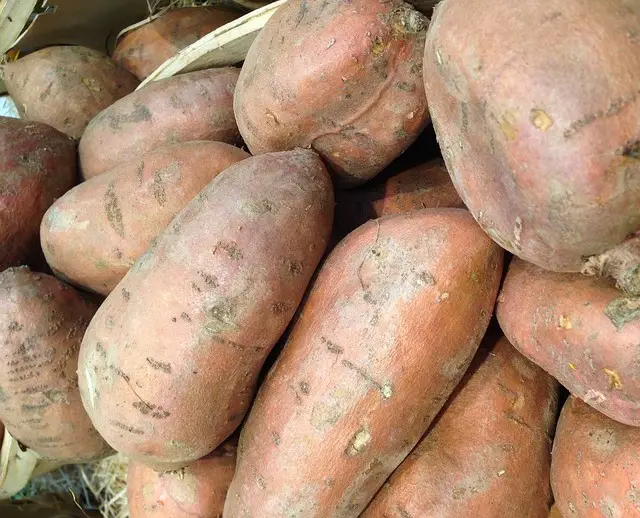
What can be said about a regular potato can pretty much be said about sweet potatoes. At 100 calories per 4.6 ounces (.57 cups) the average sweet potato will provide you with just a little over 100 calories.
Sweet potatoes prefer sunny locations and loose, sandy soil. If your soil is too hard or compacted, consider growing potatoes in buckets or raised beds. A sweet potato plant will produce fewer tubers than a regular potato plant and they can take up to 17 weeks before they are ready to be harvested.
Sweet Corn

Ah, everyone’s favorite summer picnic food and a highly used product around the world. Sweet corn was developed specifically for humans due to its higher levels of sugar.
At 90 calories per 3.2 ounces (.4 cups) the average ear of sweet corn will yield up to 90 calories and it will take up to 100 days before it's ready to be harvested. Be sure to choose a location that receives full sunlight and gives the corn plenty of room to grow.
Lentils
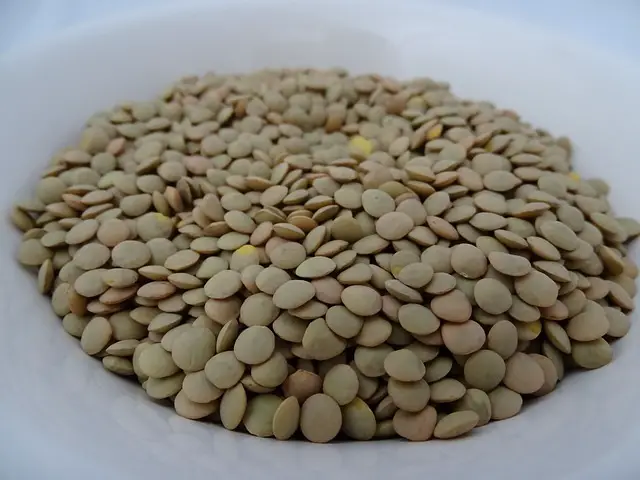
Like beans, lentils are a part of the legume family and they are used around the world either in their dry form or canned version. Lentils provide 230 calories per cup and can be prepared in a variety of ways, making them a popular and calorie-dense crop to grow.
Lentils require around 15 weeks of growing time before they can be harvested. Lentils grow best in cool, dry locations where they also receive full sunlight.
Avocado

The avocado made a huge comeback in recent years as a healthy food to be eaten, primarily due to its levels of healthy fats. At 234 calories per cup, this is the number of calories you can expect out of one avocado. As great as avocados may be, there are two huge downfalls to growing them.
The first is that avocados grow on trees, meaning you will need a decent amount of space for it to grow. Secondly, if you are starting from seed, it will be many years before you see your first avocado. To speed this process up, consider planting a tree rather than starting from seed.
Chickpeas
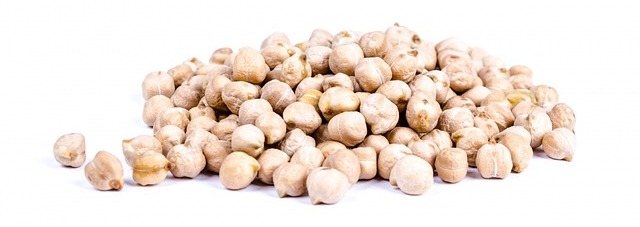
Another option on this list is from the legume family and with good reason. At 729 calories per cup (raw), chickpeas provide a ton of calories per serving. Like most legumes, they are quite versatile to cook with and can be harvested around 15 weeks after planting.
Chickpeas are a good option for container gardening because they only grow to about 18 inches tall but make sure the container is placed in full sunlight.
Garlic
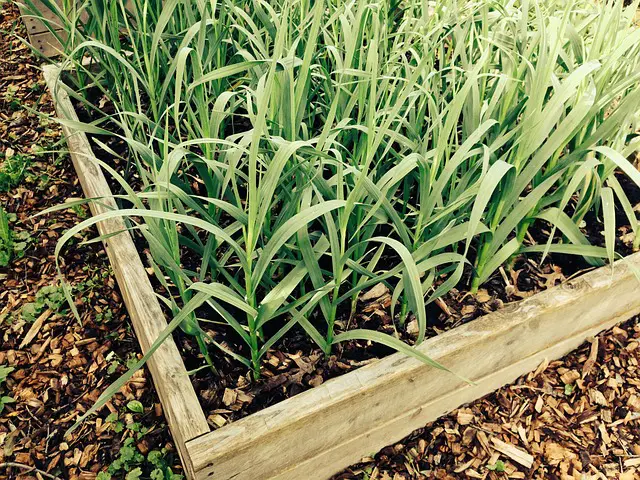
Garlic is a part of the onion family even though most of us don’t really think of it as a vegetable but more as an additive for flavoring. 200 calories per cup sounds decent but the average size clove of garlic only has around 4 calories.
Also, even though garlic is relatively easy to grow it can take up to 9 months before it's ready for harvest. Garlic plants like full sunlight, and loose soil that has a slightly higher pH.
High-Calorie Fruits For Survival
The fruits below are listed in no particular order.
Watermelon
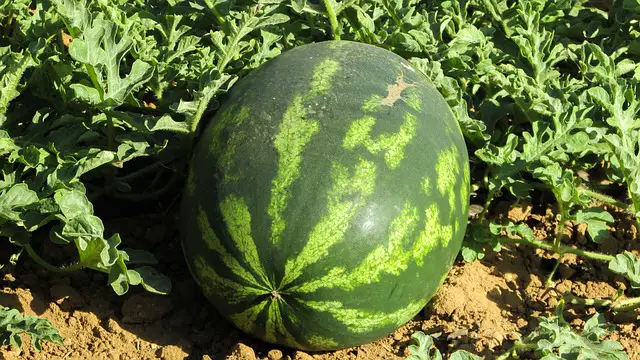
Watermelon is another summertime favorite food to eat and it will provide roughly 46 calories per cup (diced). When planting, choose soil that drains well and is somewhat loose. You will also need quite a bit of space as each plant needs around 20 square feet for growing. You can expect to harvest a watermelon in about 90 days.
Cantaloupe
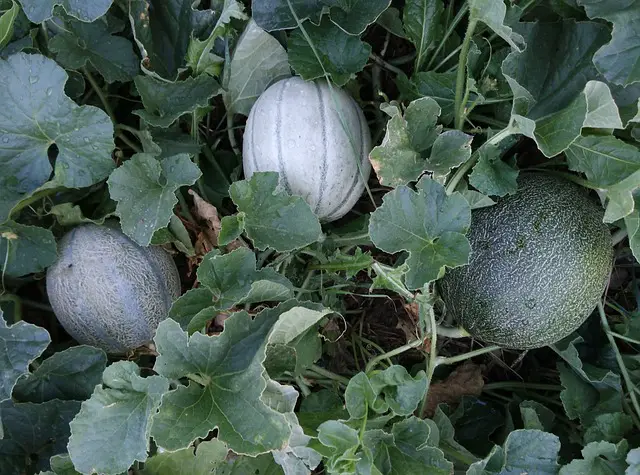
One cup of diced cantaloupe will provide around 50 calories with a whole large melon providing around 270. Cantaloupes grow best in rich soil, warm temperatures, and sunlight. Consider growing melons on a trellis to help keep the melons off the ground and you can expect to harvest a cantaloupe after about 80 days.
Honeydew

The honeydew melon will provide you with about 60 calories per cup (diced) and one large whole melon will contain around 450 calories. Honeydews do best in hot and dry climates. If you live in a colder region, start them indoors and do not transplant them outside until after the first frost. You can expect to harvest your first honeydew in between 50-100 days depending on the growing conditions.
Winter Melon

The winter melon is technically a vegetable that is related to the cucumber, and it can produce rather large fruit, resembling a large watermelon Weighing up to forty pounds, one winter melon can provide almost 800 calories and they grow well in rich soil, well-drained soil, giving the melon plenty of space to grow. It also likes to be in locations that receive full sunlight throughout the day.
Pineapple
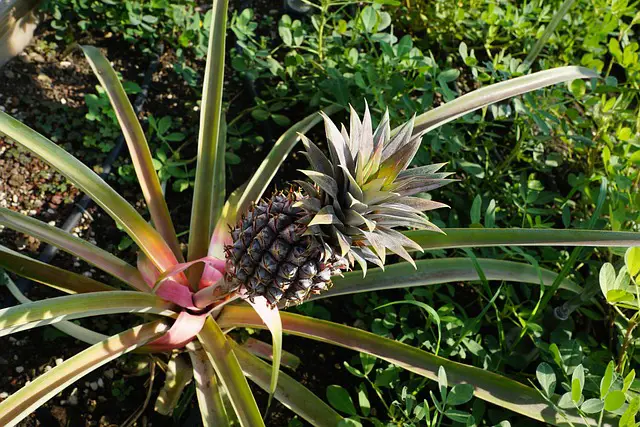
The pineapple is a tropical plant found in South America and one whole fruit can provide around 450 calories. Since it does well in tropical locations, it’s no surprise that the pineapple plant does well in warm climates where it receives plenty of sunlight. The downside to growing pineapple is that it can take up to two years before you can harvest any fruit.
Banana

Bananas are another fruit packed with nutrients that have become a part of our daily diets and they provide about 110 calories per 4.5 ounces (.56 cups) A single banana contains around 105 calories.
A banana tree can produce fruit in a relatively short time frame, around one year. Banana trees do best in warm humid conditions and do not like extreme temperatures in either direction.
Grapes
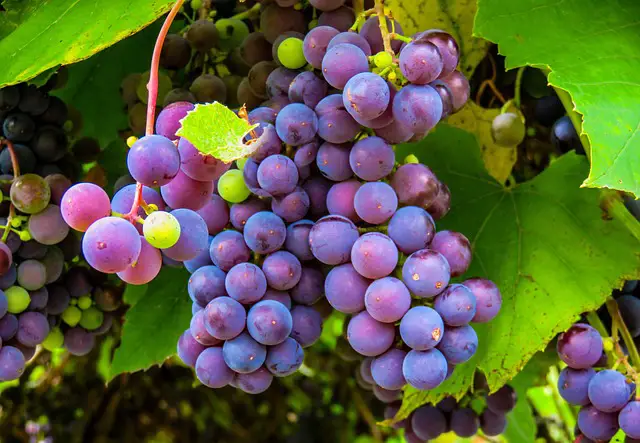
Grapes are another popular fruit used in snacks and other dishes that provide around 90 calories per 4.5 ounces (.56 cups). You will need a bit of area for raising grapes as they grow on vines that need room to spread out. Depending on the variety, grapevines can take several years before they start producing fruit.
Keep Your Garden Soil Healthy
If the soil in your garden isn’t in good condition then your plants aren’t going to do well. Here's how to keep your soil in good health.
Get To Growing
Joy can be found in the process of growing not to mention the benefits reaped upon harvest. If you have never grown food before it can seem like a daunting prospect. I suggest starting off small, perhaps trying to grow some microgreens on your window sill or kitchen counter.
For some people, growing food may seem impossible given their circumstances. I promise you that it is not, where there is a will there's a way. If you don’t have a green thumb, make it green by getting your hands in the dirt. It’s better to learn how to do this stuff now when you aren’t depending on it.
Like this post? Don't Forget to Pin It On Pinterest!


